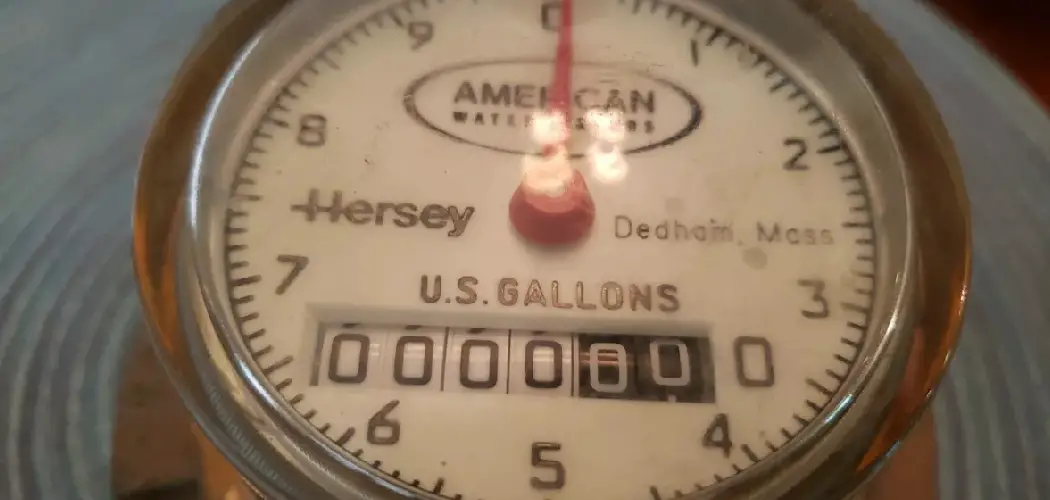Reading a cubic-foot water meter is essential for understanding your water usage and managing your utility expenses effectively. This process helps not only track your consumption but also identify any potential leaks or irregularities in your water usage.
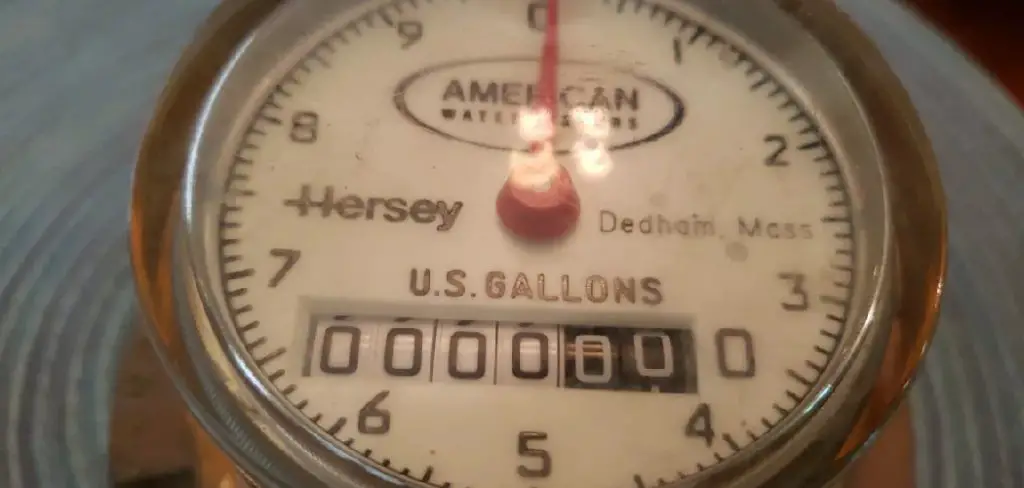
In this guide on how to read a cubic foot water meter, we will walk you through the steps necessary to accurately read a cubic foot water meter, ensuring that you can keep a close eye on your water consumption and promote efficient water management in your household or business.
What is a Cubic Foot Water Meter?
A cubic foot water meter is a device used to measure the volume of water that flows through a given system, typically in residential or commercial settings. This type of meter quantifies water usage in cubic feet, providing a clear indication of how much water is being consumed over a specified period. Commonly installed by water utility companies, cubic-foot water meters are essential for billing purposes and for monitoring water waste.
These meters help homeowners and businesses understand their water consumption patterns, enabling them to make informed decisions to conserve water and reduce costs. Reading a cubic foot water meter may seem complicated at first, but with the right knowledge and tools, it can be done quickly and accurately.
Needed Materials
To read a cubic foot water meter, you will need:
A Pen and Paper to Record Your Readings
The first thing you will need is a pen and paper to record your readings. This will help you keep track of your water usage over time, allowing you to identify any spikes or inconsistencies that may require further investigation.
Access to Your Water Meter
Ensure that you have easy access to your cubic foot water meter. Most meters are located outside the property near the main water line, but some can also be found within the property boundaries.
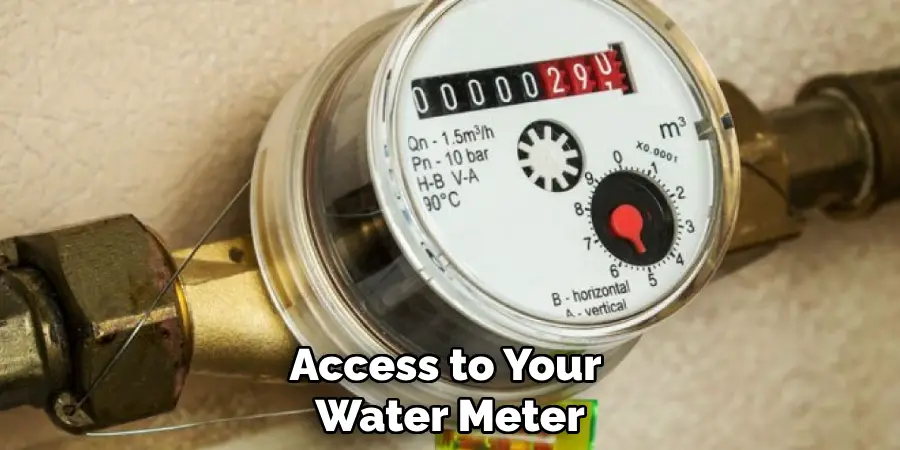
A Flashlight (Optional)
If your meter is not easily visible or in a dimly lit area, having a flashlight can make it easier to read the numbers on the meter.
8 Simple Step-by-step Guidelines on How to Read a Cubic Foot Water Meter
Step 1: Locate Your Water Meter
The first step in reading your cubic foot water meter is to find its exact location. Most water meters are installed outside your home, typically near the sidewalk or within the property line. Look for a rectangular or round cover, often marked with the word “Water” or a similar designation. If your property has a basement or crawl space, check for any meters that may be located indoors.
Once located, ensure the area is clear of debris or obstructions to facilitate easy access. If you encounter difficulty finding your meter, refer to your property diagrams or contact your local water utility provider for assistance.
Step 2: Identify the Meter Type
Once you have located your water meter, the next step is to identify the type of meter you have. There are generally two main types of cubic foot water meters: mechanical meters and digital meters. Mechanical meters typically feature dials and a series of numbers that rotate as water flows through them, while digital meters display water usage on an electronic screen.
Understanding your meter type is crucial as it dictates how you will read the water usage. For mechanical meters, you will need to interpret the readings from the dials, which may display multiple digits. On the other hand, digital meters tend to show a straightforward numerical readout, often indicating the total usage directly. Familiarising yourself with your specific meter type can streamline the reading process and help you accurately track your water consumption.
Step 3: Check the Reading Units
Before taking your reading, it’s important to check the units used by your cubic foot water meter. Most cubic foot meters measure water use in cubic feet, but some may also feature additional measurements, such as gallons. Look for any labels or markings on the meter that indicate the units of measurement.
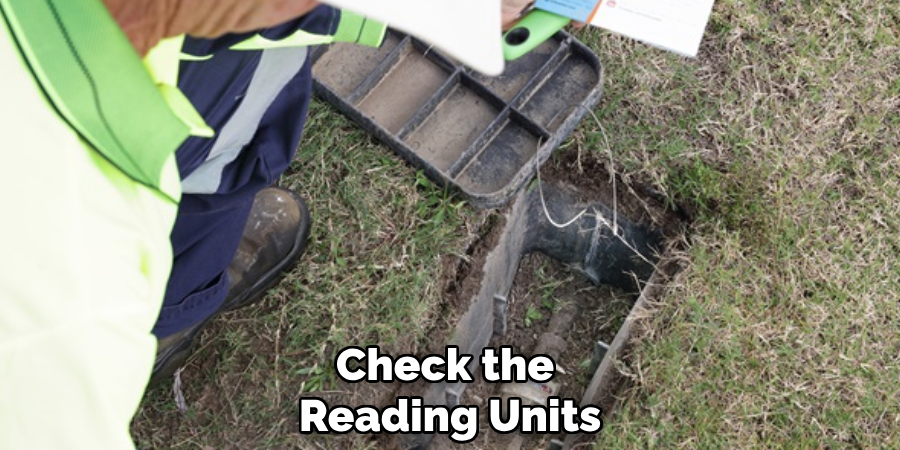
Understanding these units will help you interpret the readings accurately and compare your consumption to prior readings or billing statements. Additionally, if you need to convert the reading into another unit, such as gallons, having this information will be helpful in making those calculations.
Step 4: Read the Meter Dials or Screen
Once you have identified your meter type and units, it’s time to take your reading. For mechanical meters, start by looking at the dial on the far left. Each dial represents a single digit, with the first dial representing one cubic foot.
As you move towards the right, each subsequent dial increases in value by a factor of ten. Look for any dials that may be slightly offset or in between numbers, as these can be read as either the lower or higher number, depending on which is closer.
For digital meters, simply record the numerical readout displayed on the screen. Some digital meters may also have multiple screens that display different readings, so ensure you are recording the correct one.
Step 5: Subtract Previous Reading (If Applicable)
If you have taken readings in the past, it is essential to subtract your previous reading from your current one to get an accurate measure of water usage.
This step allows you to track any changes in consumption and detect potential leaks or irregularities.
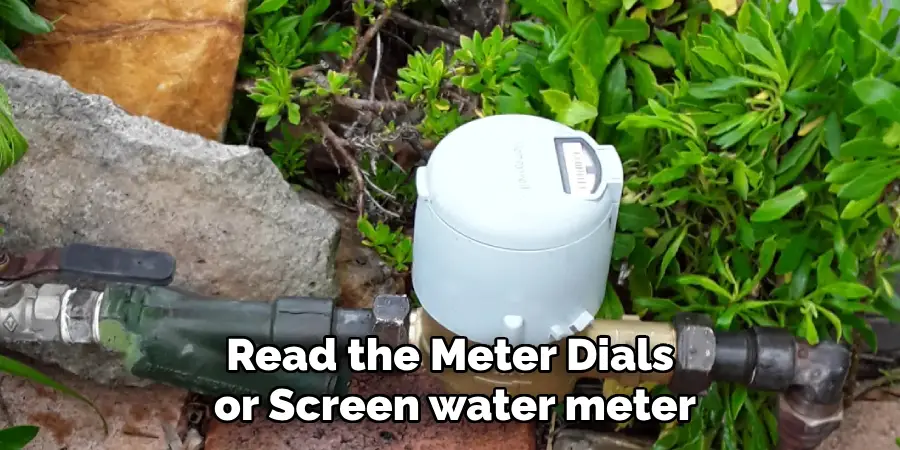
To do this, simply subtract the previous reading from your current one, keeping in mind that each dial on a mechanical meter represents a different digit. For digital meters, subtracting the previous reading will give you the total usage since the last recorded reading.
Step 6: Record Your Reading
After you’ve successfully obtained your current reading, it’s crucial to document it accurately. Use the pen and paper you prepared earlier to write down the reading, including the date and any relevant notes about your water usage or changes in routine that may affect consumption.
If you are working with a mechanical meter, ensure that you have interpreted the dials correctly and note down the total number of cubic feet used.
For digital meters, simply jot down the number displayed on the screen. Regularly recording your readings will provide valuable insights into your water usage trends, allowing you to make informed decisions about conservation efforts and track any unusual patterns that may indicate leaks or inefficiencies.
Step 7: Check for Leaks or Irregularities
Once you have recorded your reading, take a few minutes to check for any potential leaks or irregularities. Start by turning off all water sources in and around your property, such as faucets, showers, and washing machines.
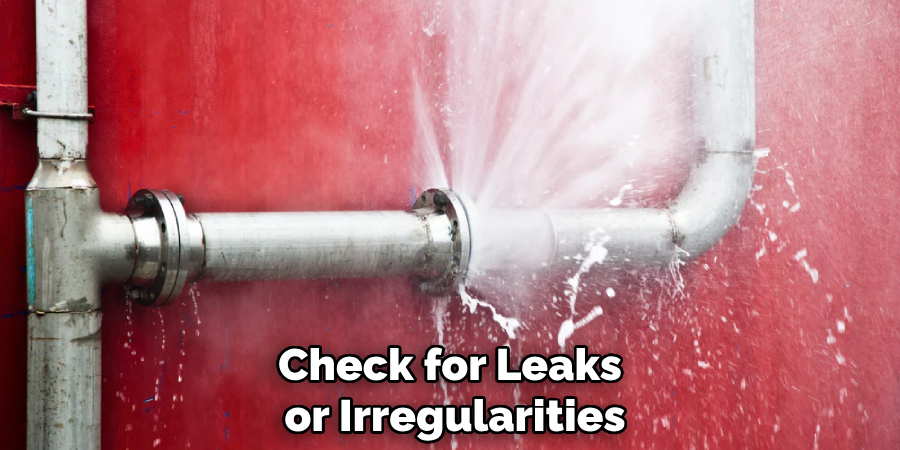
Wait for about an hour, then check if the meter reading has changed significantly. If it has increased, this may be an indication of a leak somewhere in your plumbing system that needs attention.
Additionally, keep an eye out for any unusual patterns in your consumption. If there is a sudden spike in usage without any changes in routine or behavior, this may also warrant further investigation. It’s essential to stay vigilant and address any potential issues promptly to avoid wasting water and incurring high utility bills.
Step 8: Repeat Regularly
Reading your cubic foot water meter should be done regularly, ideally, once a month, to accurately monitor your consumption patterns. This practice not only helps you understand your personal impact on the environment but also ensures that you are paying for the correct amount of water usage.
Make it a habit to read your meter at the same time each month and compare readings to previous months to identify changes or trends. By keeping track of your water usage, you can become more mindful of your consumption habits and make informed decisions about conservation efforts.
So remember to locate, identify, check units, read the meter, subtract previous readings, record your reading, check for leaks or irregularities, and repeat regularly to become a responsible and informed water user.
Additional Tips
- Be patient and take your time when reading the meter to ensure accuracy.
- If you notice any abnormalities in your consumption or meter readings, contact your utility company for further assistance.
- Consider investing in a smart water meter that automatically tracks and reports your usage, eliminating the need for manual readings.
- Educate yourself on ways to conserve water and reduce your overall consumption. Small changes in daily habits can make a significant impact on the environment and your wallet.
- Be mindful of any potential leaks or inefficiencies, such as running toilets or dripping faucets, and address them promptly to avoid wasting water.
- Keep track of your billing statements to compare with your recorded readings and ensure accuracy.
With these steps on how to read a cubic foot water meter, you can become a responsible and informed water user while also making efforts towards conserving this precious resource. Remember, every drop counts!
Conclusion
Monitoring your water usage is crucial for understanding your consumption patterns and promoting responsible water management. By regularly reading your meter, accurately recording your findings, and being vigilant about potential leaks, you can not only identify areas for improvement but also make informed decisions about conservation efforts.
The simple practice of taking meter readings can lead to significant insights into your water habits, ultimately benefiting both your wallet and the environment. Embrace the responsibility of being an informed water user, and remember that every drop counts in the larger effort to conserve this precious resource. Thanks for reading this article on how to read a cubic foot water meter.

